We may be compensated if you purchase through links on our website. Our team is committed to delivering honest, objective, and independent reviews on home products and services.
Project details
Skill
Cost
Estimated Time
A striking vertical floral installation can brighten a big blank wall, take advantage of sunlight that never reaches the ground, and—best of all—keep you off your knees. In the video above, This Old House senior technical editor Mark Powers demonstrates how to construct a DIY living wall. Our original design is a simple grid with lattice sections for climbing vines and horizontal rails that function as French cleats, making it easy to change the position of planter boxes or bring them indoors for winter. Below, we’ll take you through the construction process.
*Unless otherwise noted, costs in this article reflect an average of prices that our team found from hardware stores like Lowes and Home Depot, and on Amazon.com.
Understanding Vertical Gardens
Vertical gardens are especially popular in urban areas where ground space is limited. These installations not only beautify your surroundings but also offer practical benefits.
Benefits of Vertical Gardens
- Space efficiency: Ideal for small outdoor areas
- Aesthetic appeal: Creates a striking visual focal point
- Environmental impact: Improves air quality and supports biodiversity
- Insulation: Provides natural temperature regulation for your home
Types of Vertical Gardens
There are several approaches to creating a vertical garden, ranging from simple hanging planters to complex hydroponic systems. This project focuses on a frame-based “living wall” system that allows for easy customization and maintenance.
Planning Your Vertical Garden
Before diving into construction, consider factors such as location, sunlight exposure, and the types of plants you want to grow.
Choosing the Right Location
Select a wall that receives adequate sunlight for your chosen plants. South-facing walls often provide ideal conditions for most plants. Wnsure the wall can support the weight of the garden frame and plants.
Selecting Plants
Choose plants that thrive in vertical environments and match your local climate. Consider a mix of the following.
- Trailing plants for cascading effects
- Compact perennials for consistent foliage
- Flowering plants to add color and variety
- Herbs for both visual appeal and culinary use
After the step-by-step guide, we’ll share the plants our landscaper picked and provide our list of “bulletproof” perennials that are beautiful and easy to grow.
Overview of Building a Living Wall Vertical Garden
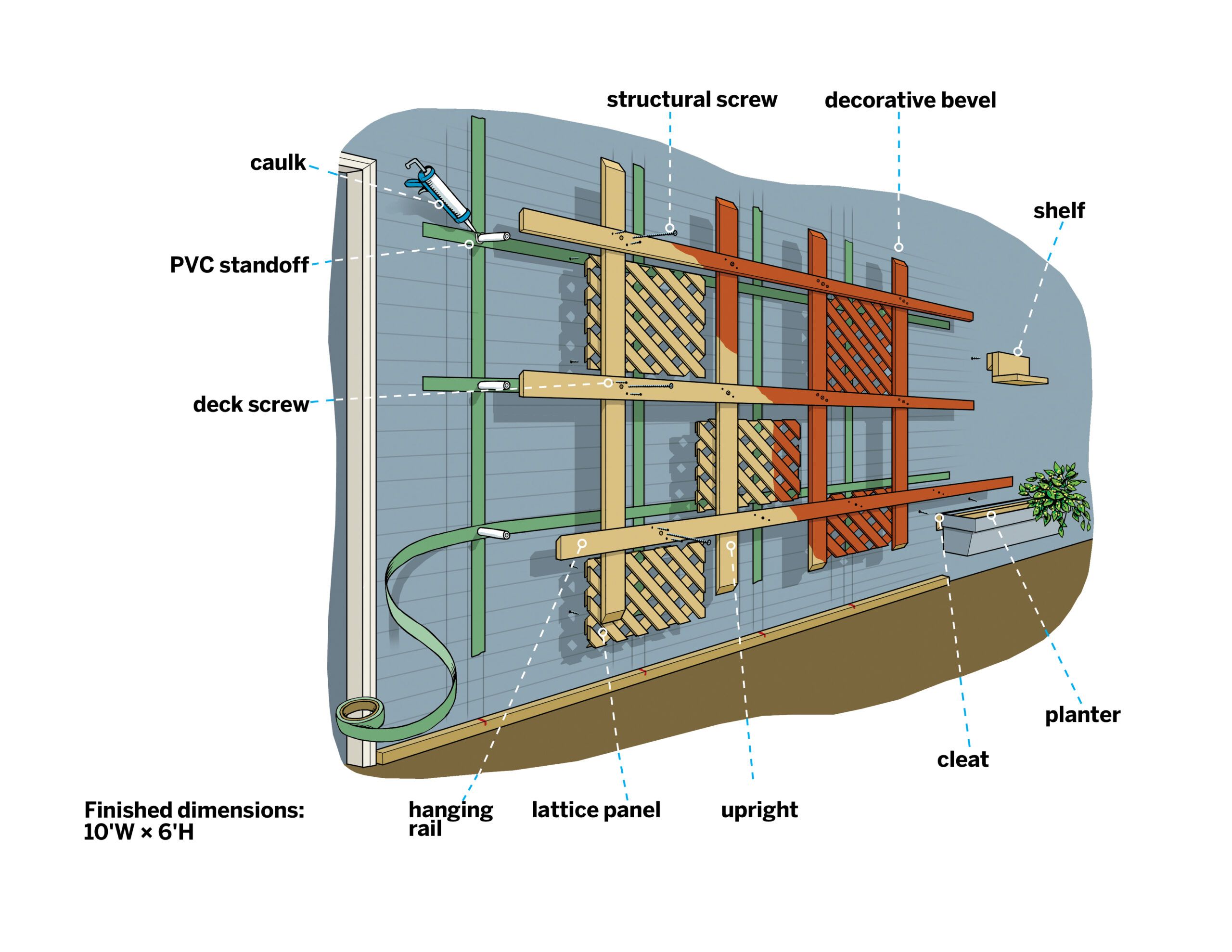
Take a look at the diagram above for an illustration of the frame parts and how they fit together.
Materials
- Pressure-treated pine for rails and uprights (see cut list below)
- Lattice panels
- Galvanized steel planters
- Deck screws and structural screws
- PVC pipe for standoffs
- Potting soil and planting mix
- Plants of your choice
For his living wall, Powers used gray zinc window box planters from Jamali Garden and perennials from Proven Winners.
Tools
- Circular saw
- Drill/driver
- Level
- Tape measure
- Miter saw
Cut List
- 1×6 pressure-treated-pine rails (four at 12 feet, ripped in half on a 45-degree angle)
- 1×4 pressure-treated-pine uprights (five at 8 feet with beveled ends)
- 1×2 pressure-treated-pine nailing blocks (cut to fit after using the 1×2 as your story stick)
- 2×4 lumber braces (cut to fit)
- 1/2-inch lattice panels (cut to fit)
Day One: Building the Frame and Shelves
We recommend spreading this project out over two days—build the frame and the shelves (Steps 1–7) on day one, and hang and plant the garden (Steps 8–13) on day two.
Step 1: Preparing the Wall
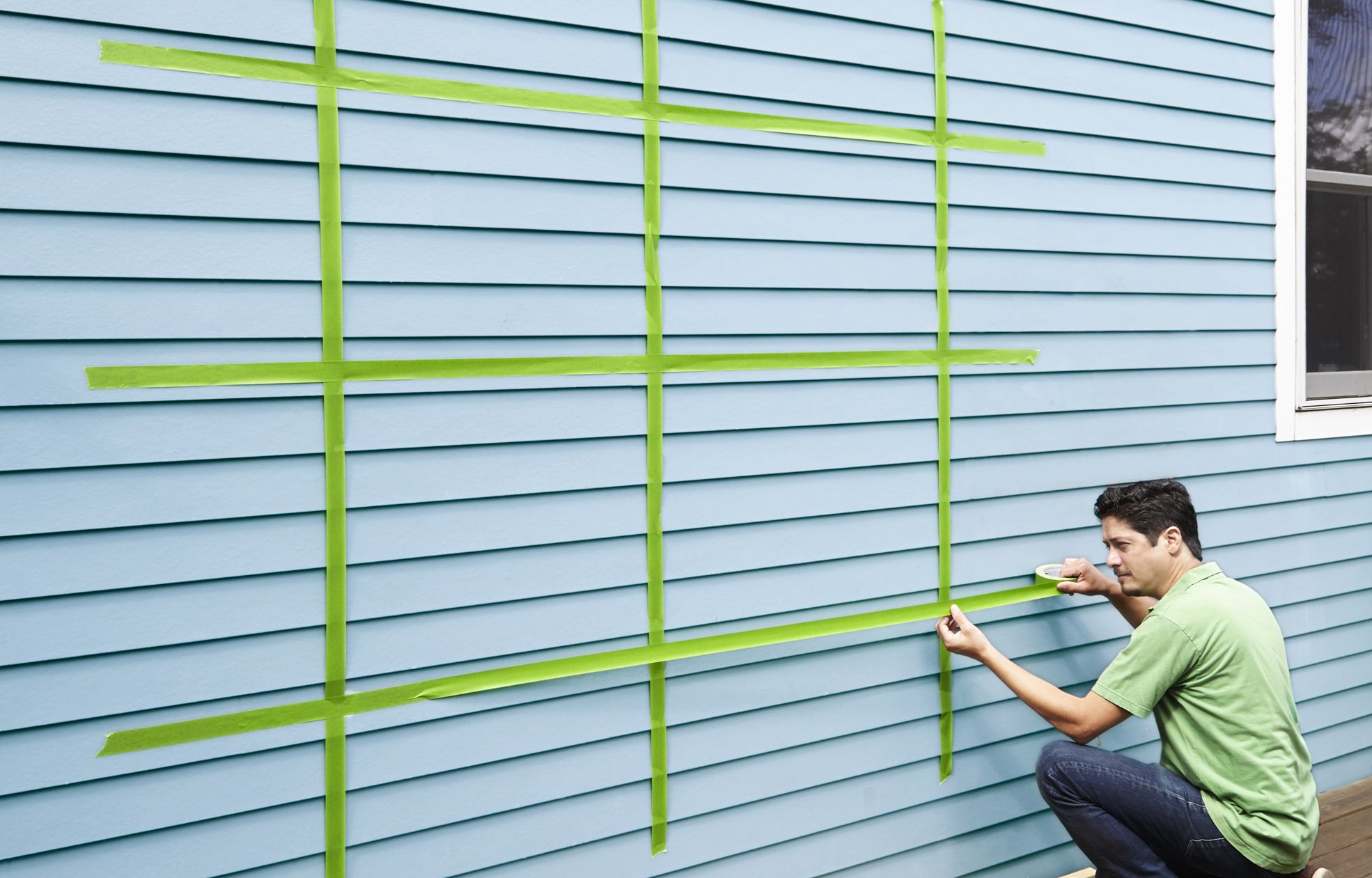
- Locate the studs on the interior wall with the stud finder and mark them with painter’s tape.
- Use a 1×2 board as a story stick to transfer stud locations to the exterior siding. Even up the 1×2 board with the jamb of a door or window inside and mark the stud locations on it.
- Take the 1×2 outside, line it up with the same jamb, and transfer the marks to the siding.
- Design your frame layout on the siding using painter’s tape, aligning at least two uprights with studs.
Step 2: Creating the Rails
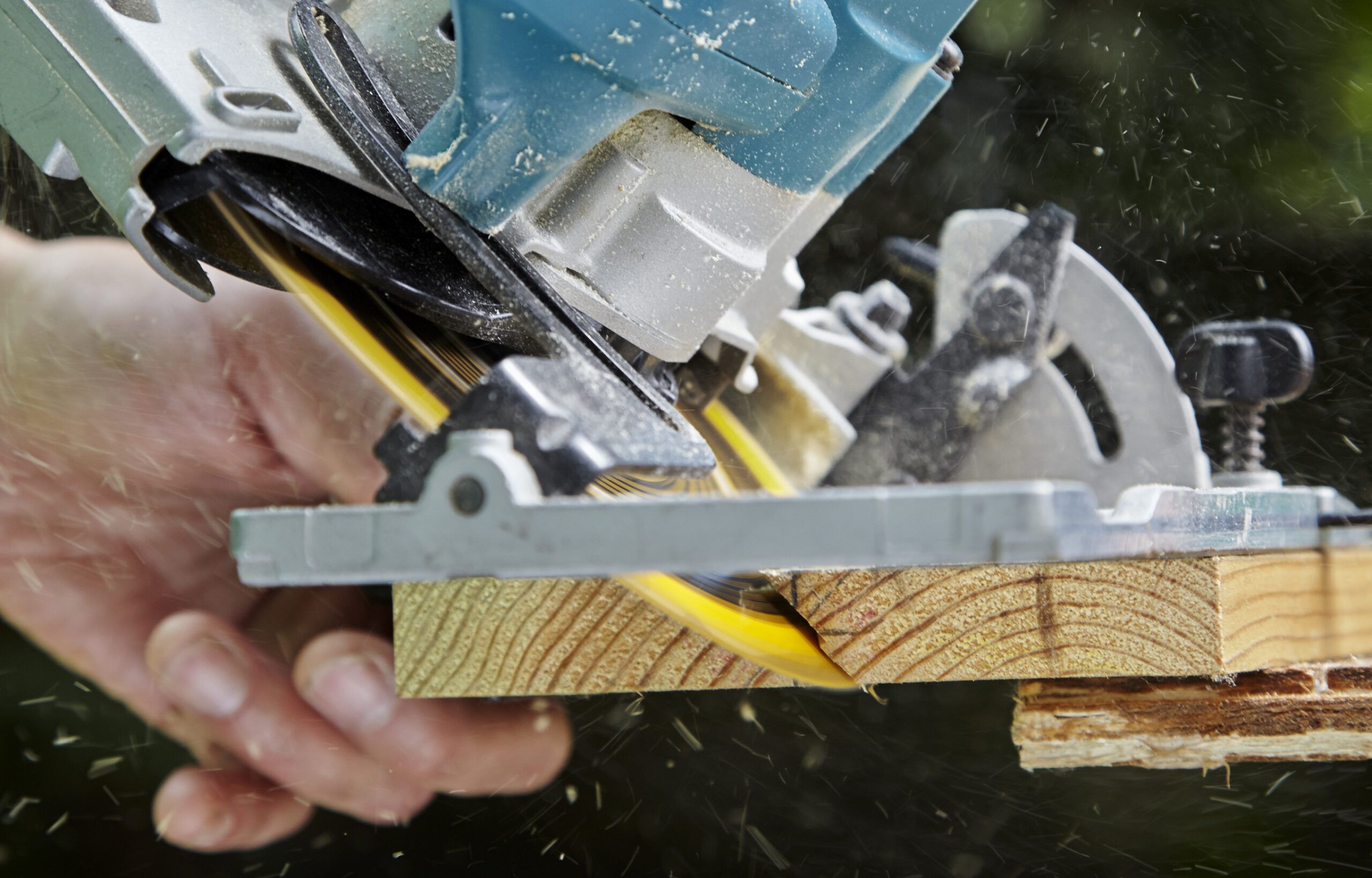
- Clamp a 1×6 to the edge of a work surface and mark the centerline of the board’s width on its end.
- Set the combination square to 3/8 inch and use it to make a perpendicular mark across the first line.
- Set the circular saw to cut at a 45-degree bevel, and adjust the fence so that the blade hits the intersection of the two marks.
- Rip down the length of the board, as shown in the picture above. Each beveled half will be a single hanging rail.
- Cut the rails to the desired length for your wall space.
Pro tip: Make sure to save the offcuts for making planter and shelf cleats later.
Step 3: Marking the Rails for the Uprights
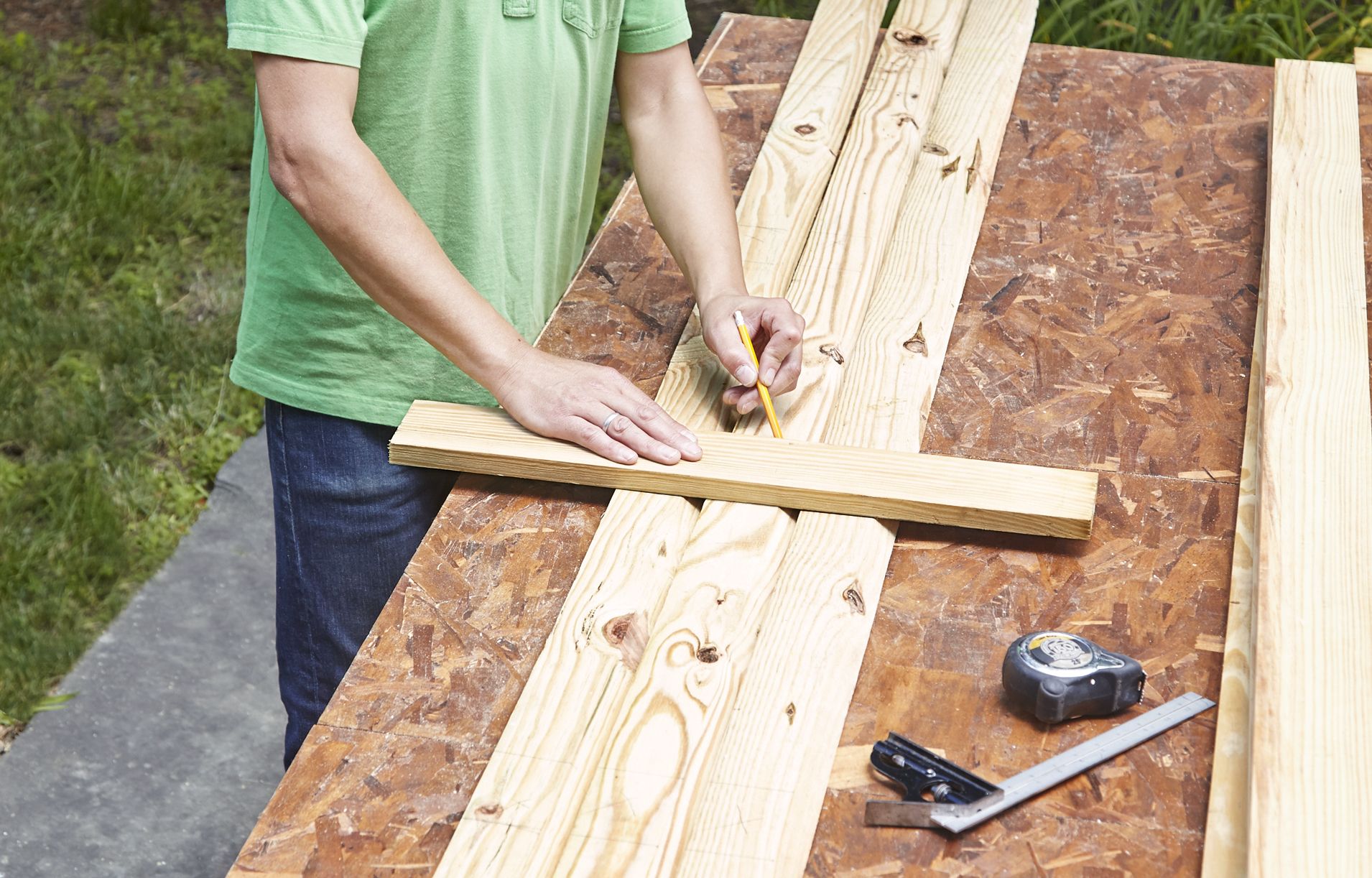
- Cut uprights to length, adding decorative 45-degree bevels at each end.
- Gang the rails together on the work surface, bevels up and ends flush.
- Use the combination square to mark where the uprights should cross the rails, based on your layout
- Line up a 1×4 scrap with the marks and draw a line across the board faces.
Step 4: Fastening the Rails
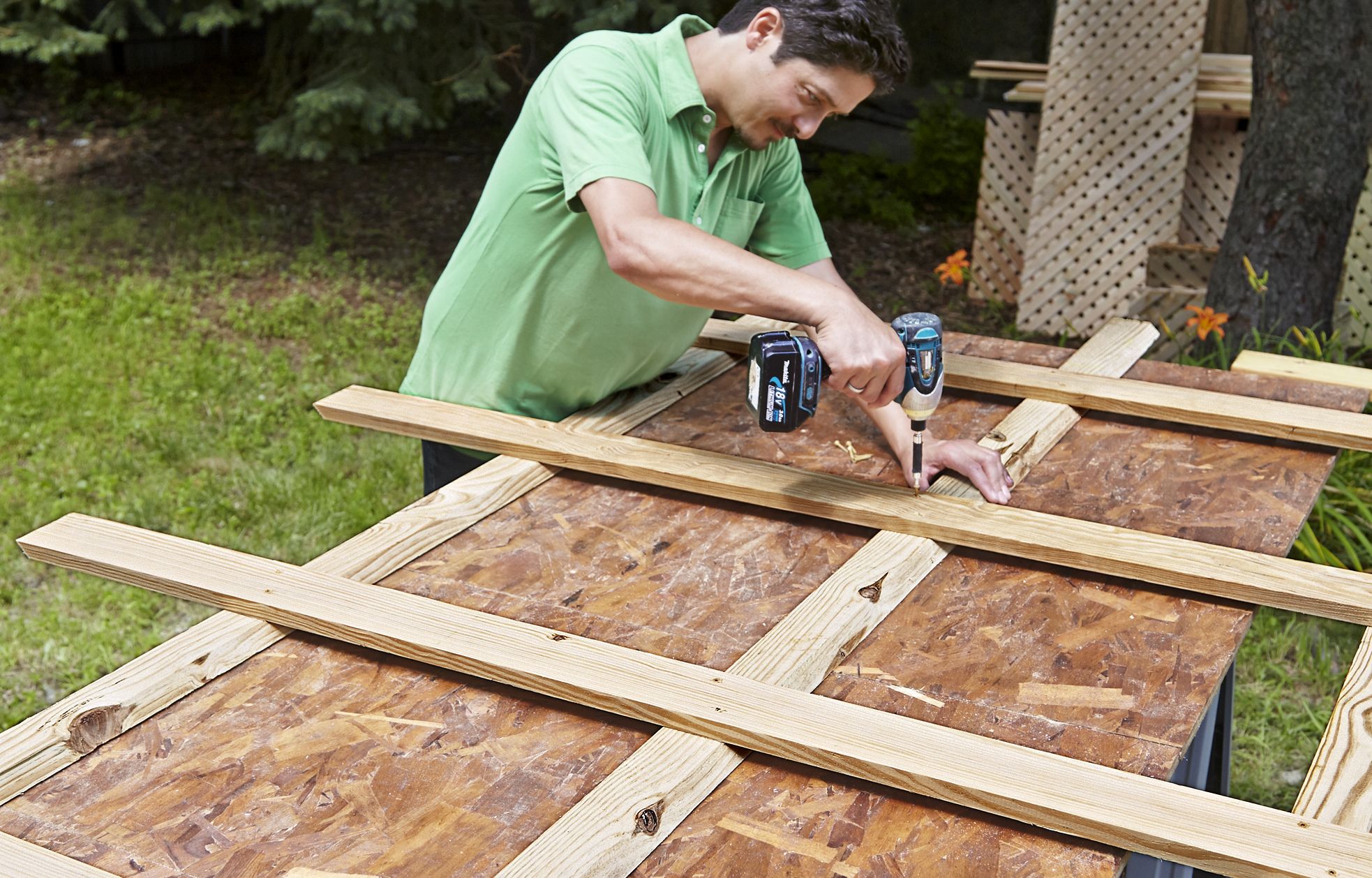
- With their beveled edges facing up, fan out the rails to create equal spacing between them. Make sure they’re at least 12 inches apart to allow room for the plants and planters.
- Lay the uprights across the rails at their marks, with their beveled ends facing down and overhanging the top and bottom equally.
- Drill two pilot holes through the upright and into the rail at opposite corners of each intersection, leaving the center clear for the structural screws.
- Fasten the uprights to the rails with 1¼-inch deck screws.
Step 5: Attaching the Lattice
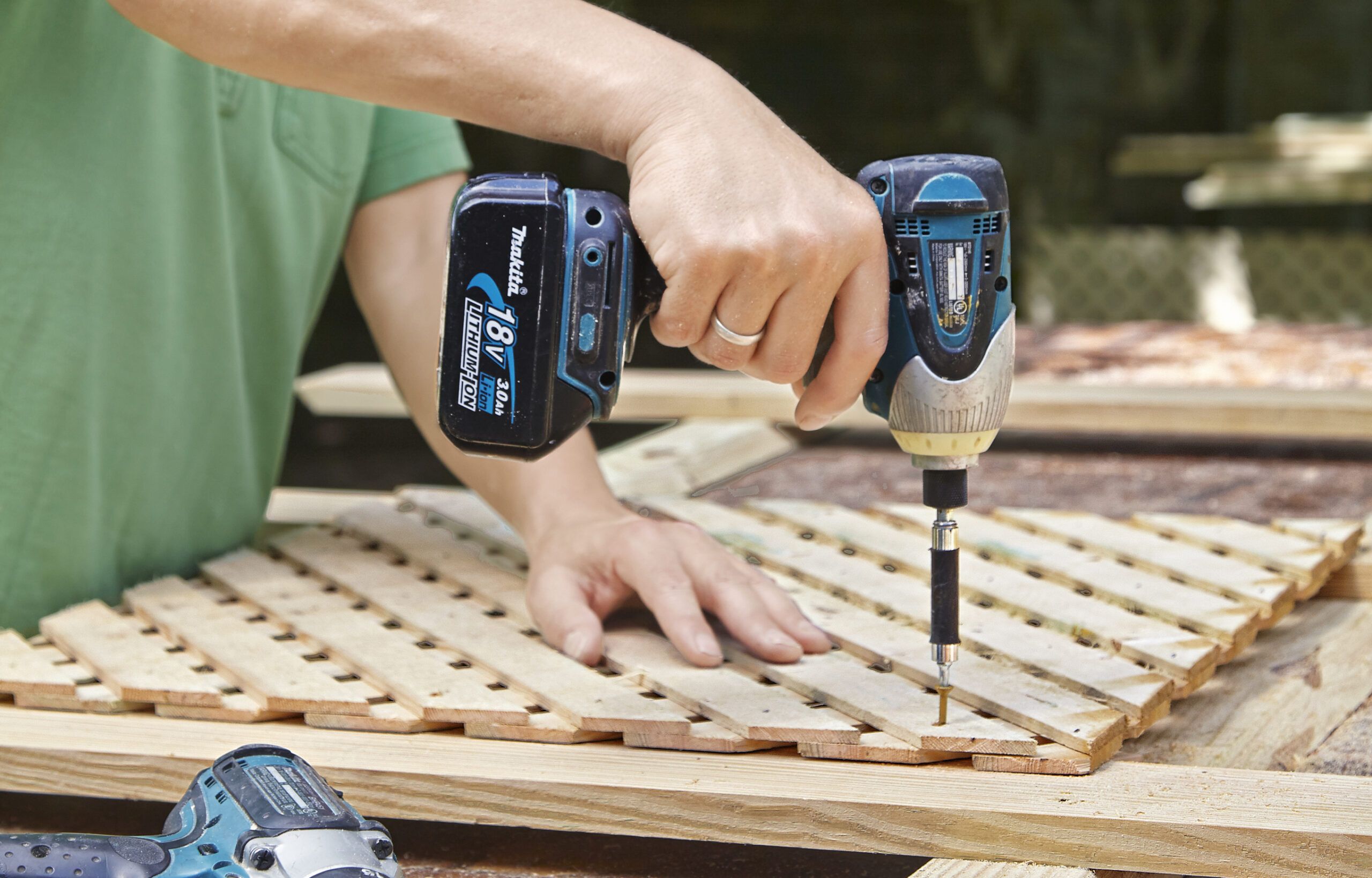
- Measure the spaces that you want to cover with lattice, and add 1 inch to all four sides to create an overlap with the rails and uprights.
- Mark a sheet of lattice, clamp it to a work surface, and cut the panels to size with the circular saw.
- Dry-fit the panels, then drill pilot holes through the top layer of lattice and into the uprights before securing them with deck screws.
- Treat the finished frame by brushing on two coats of exterior stain, allowing the first coat to dry before applying the second.
Step 6: Making the Planter Cleats
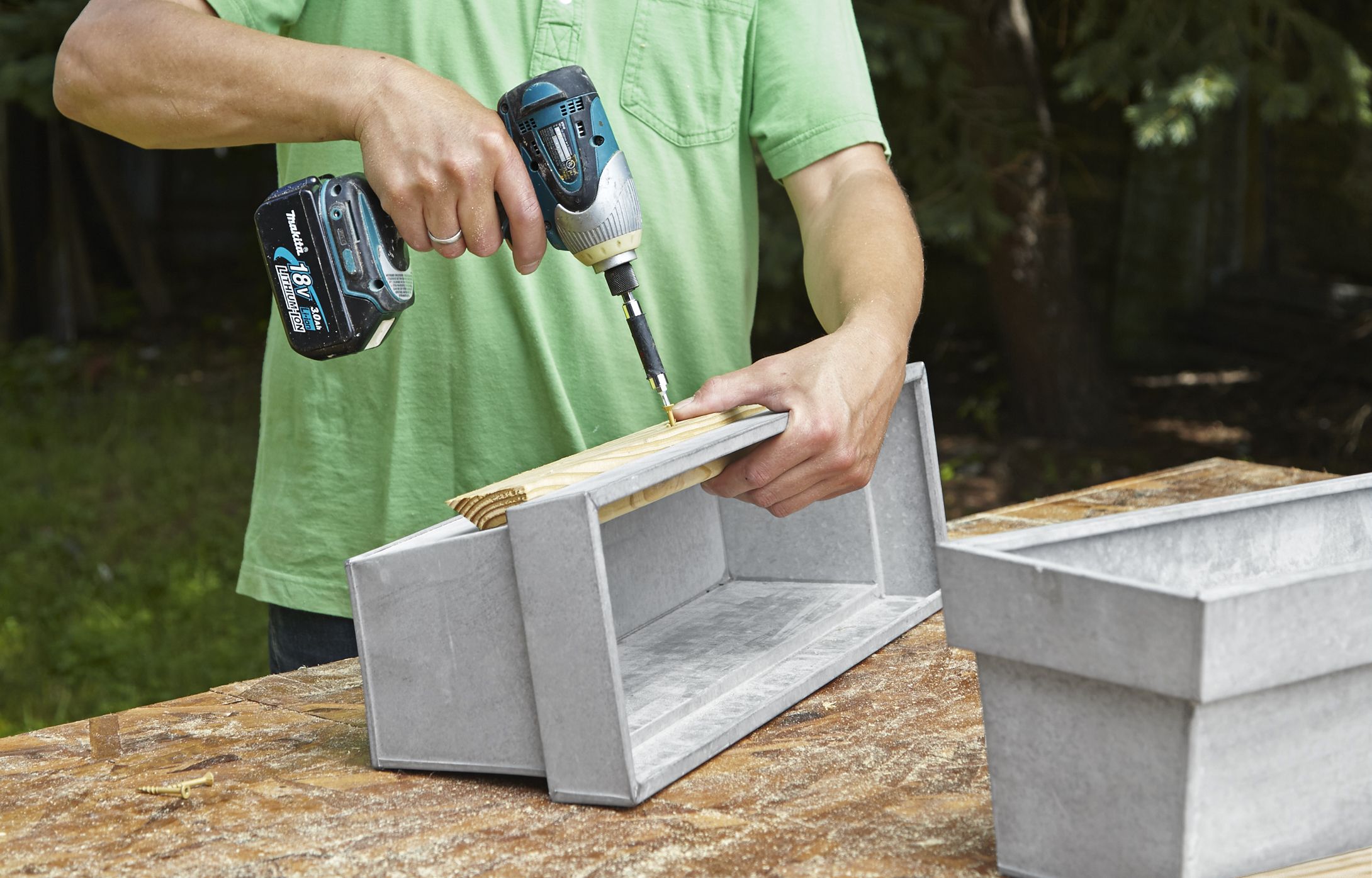
- For the cleats, cut scraps of beveled rail slightly shorter than the width of each planter.
- Cut a 1×2 nailing block the same length as each cleat.
- Sandwich the upper lip of the planter between the nailing block and the cleat, with its bevel down and facing the planter.
- Clamp the pieces together, and drill pilot holes through the cleat and planter and into the nailing block.
- Fasten cleat to block with deck screws, as shown.
Step 7: Building the Shelves
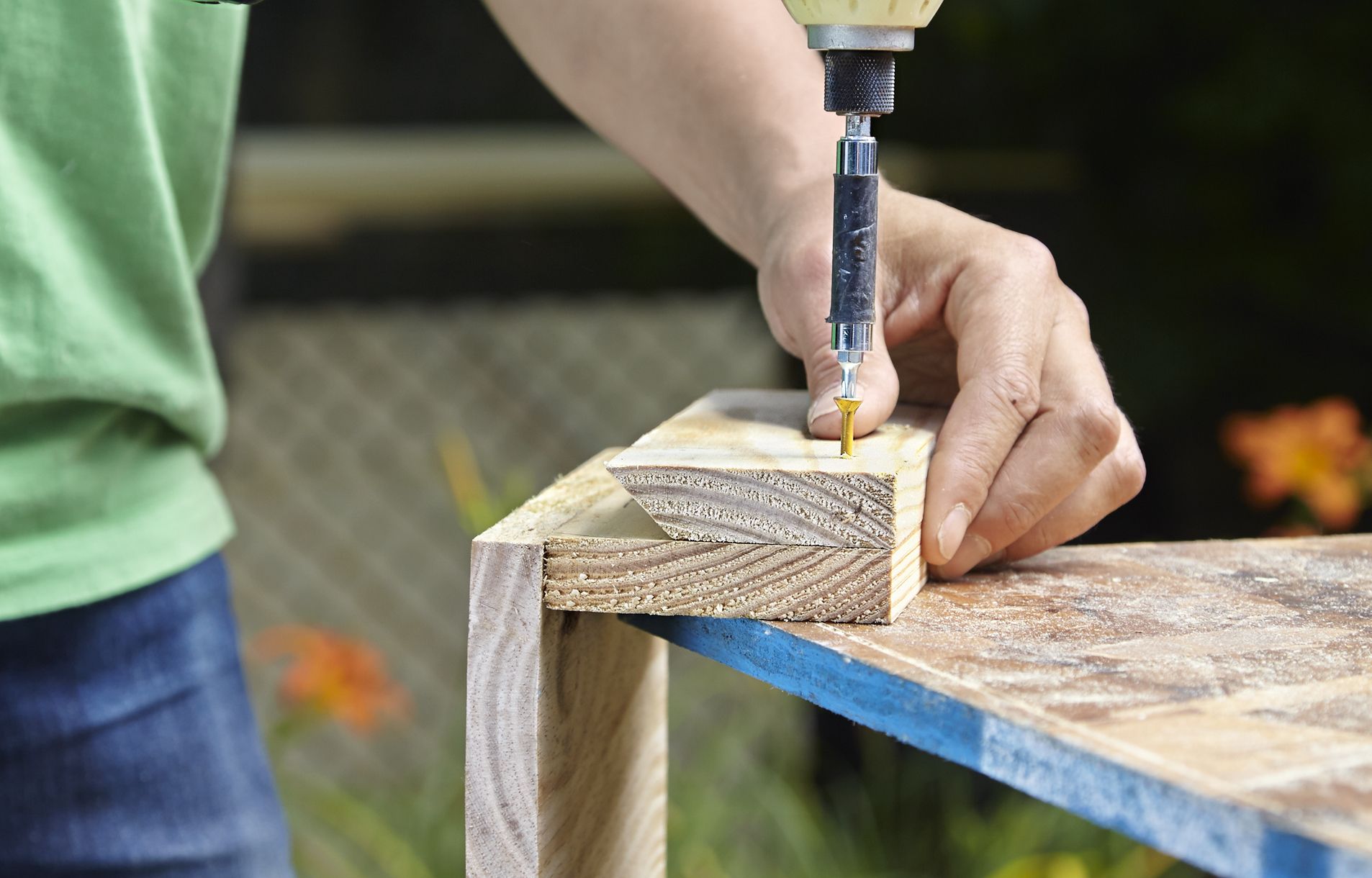
- Cut a scrap piece of 1×6 and one of 1×4 to length, as well as a beveled cleat.
- Apply wood glue to the edge of the 1×4 and clamp it against the face of the 1×6.
- Drill pilot holes through the 1×6 and into the glued edge of the 1×4, and join the two pieces with deck screws.
- Fasten the cleat to the back of the shelf with deck screws, as shown.
Day Two: Installing the Vertical Garden Frame
With the frame, planters, and shelves prepared, you can now assemble your living wall. You may stain or paint all the wood components first for a cohesive look.
Step 9: Drilling Pilot Holes
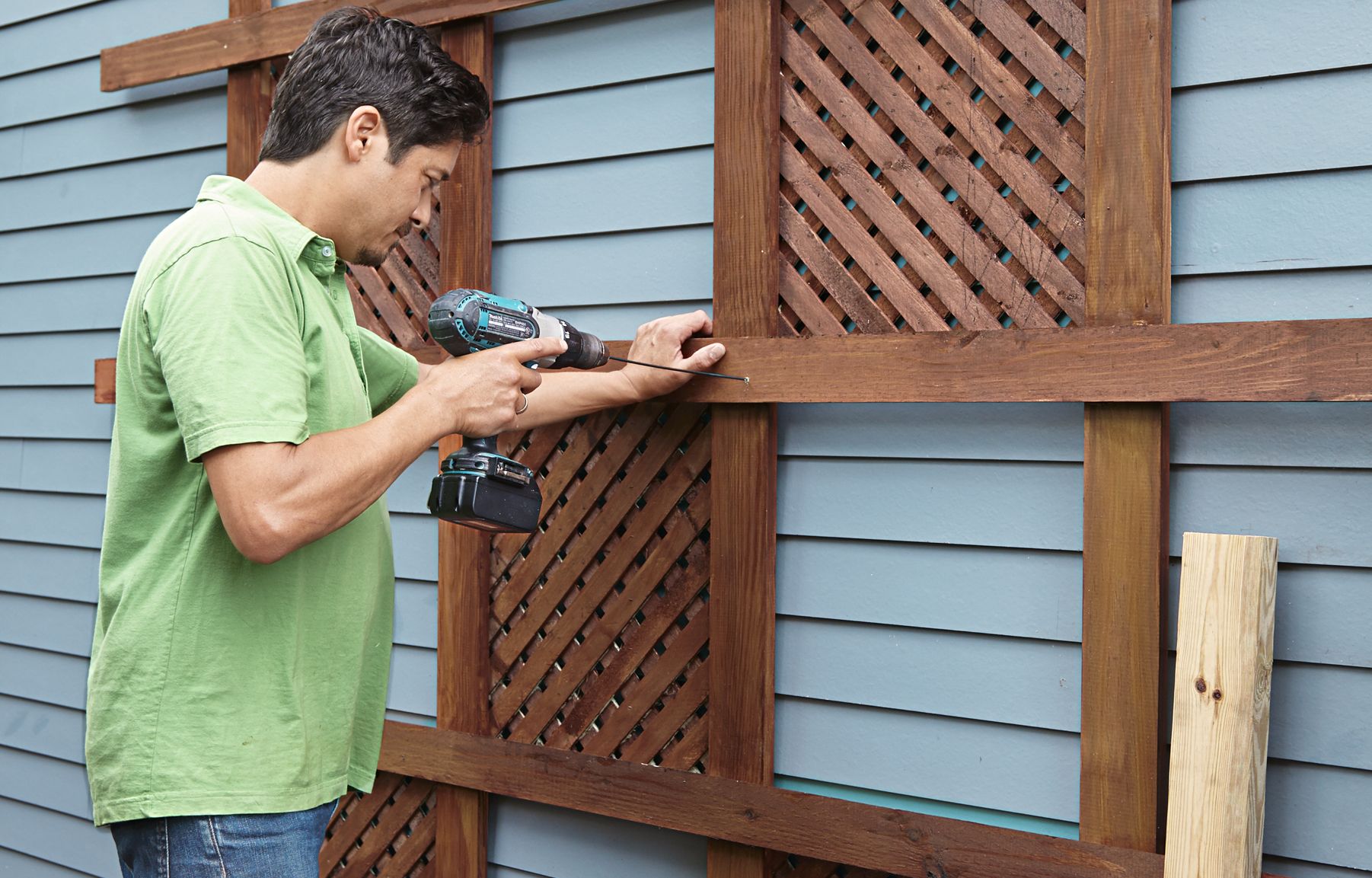
- Measure from the deck or the ground up to the bottom of the first rail, and cut two 2×4s to that length.
- Cut two more at least 4 inches longer.
- Pair the mismatched boards, even them up at one end, and fasten together with 2 1/2-inch screws to make two braces.
- Use them to prop the frame in place against the wall.
- Fit your drill/driver with the 9-inch-long 1/4-inch bit.
- At the center of each rail-upright intersection, drill a pilot hole through the frame and siding and into the stud, as shown.
Step 10: Cutting the Standoffs
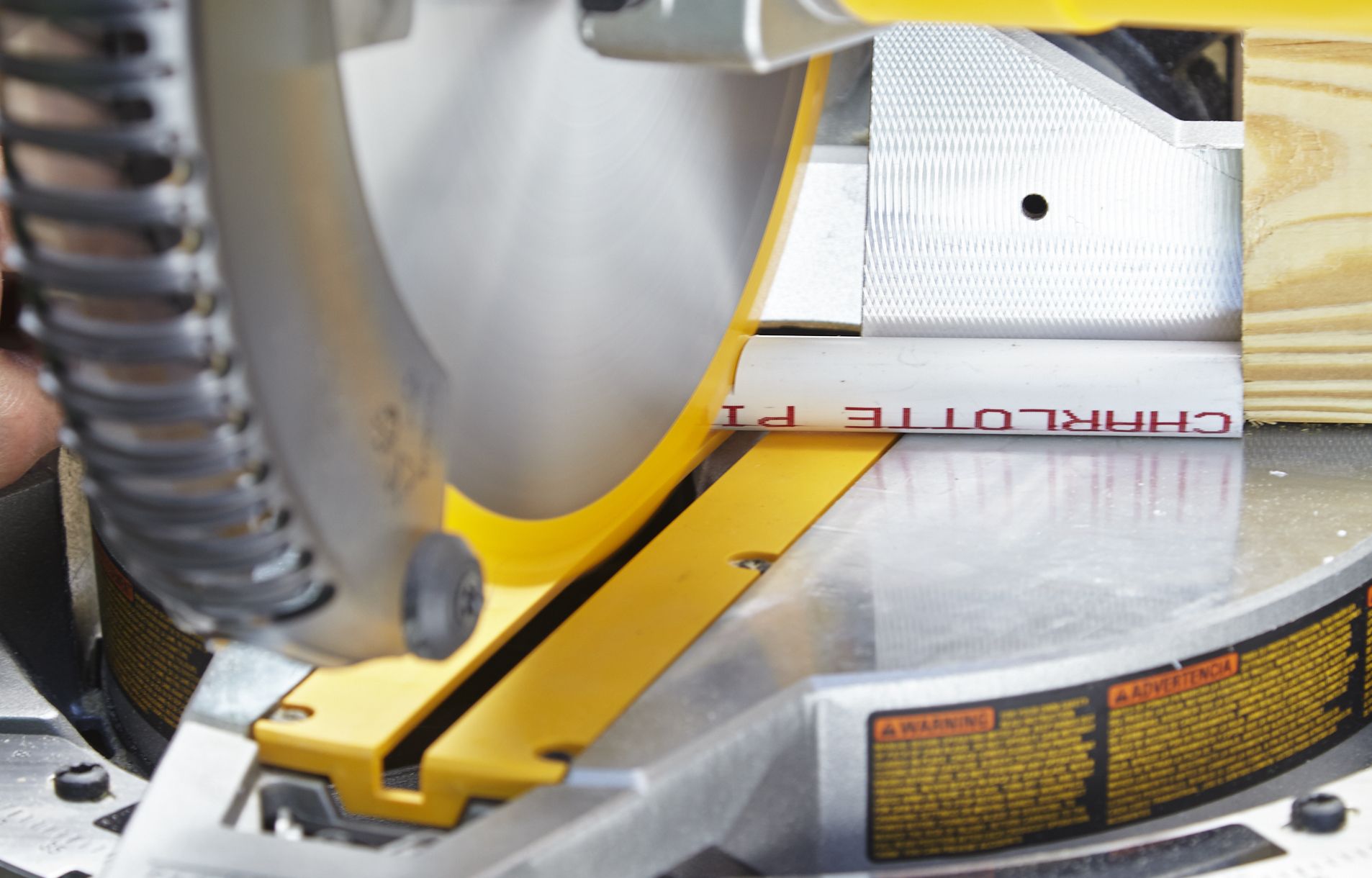
- To find the angle of your siding, butt a short piece of scrap against one course where it dead-ends into trim.
- Use the trim as a straightedge to mark the scrap, and use that piece to adjust the miter-saw blade to the correct angle.
- Cut 4-inch standoffs from 1-inch PVC pipe, one for each structural screw, making a straight cut on one end and a beveled cut on the other to match the angle of the siding.
Step 11: Mounting the Frame

- Find the intersection at the center of the frame and drive a structural screw through the pilot hole and the PVC standoff until its tip extends slightly past the standoff.
- Find the pilot hole in the siding with the tip of the screw.
- Run a bead of latex caulk around the beveled lip of the standoff, and drive the screw into place.
- Check the frame for level and secure the rest of the intersections the same way.
- Remove the braces.
Step 12: Preparing and Filling the Planters

- If necessary, fit your drill/driver with a 1/4-inch bit and drill a series of drainage holes in the bottom of each metal planter.
- In a bin, combine two parts potting soil with one part planting mix, and fill the planters with the mixture.
- Make holes in the soil and set the plants in place.
- Cover the roots with the soil mix, tamping it down gently.
Step 13: Hanging the Planters
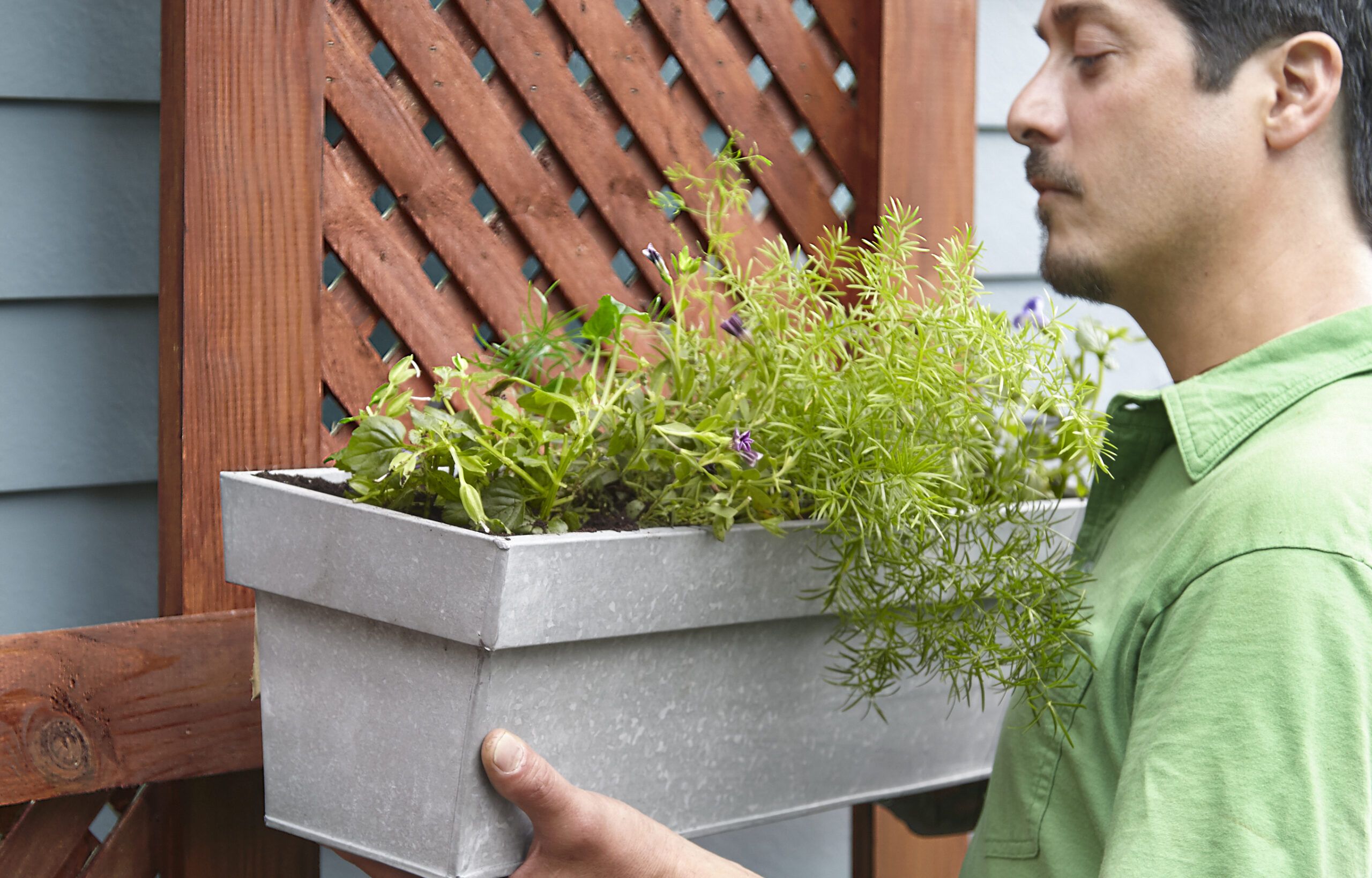
- Arrange the planters and shelves by hooking the beveled cleats on the hanging rails.
- If desired, position climbing plants and vines below lattice panels, and, using vinyl plant tape, loosely tie hanging stems to the lattice to train them.
- Water the plants generously, especially at first, and enjoy watching them grow in.
Bulletproof Perennials
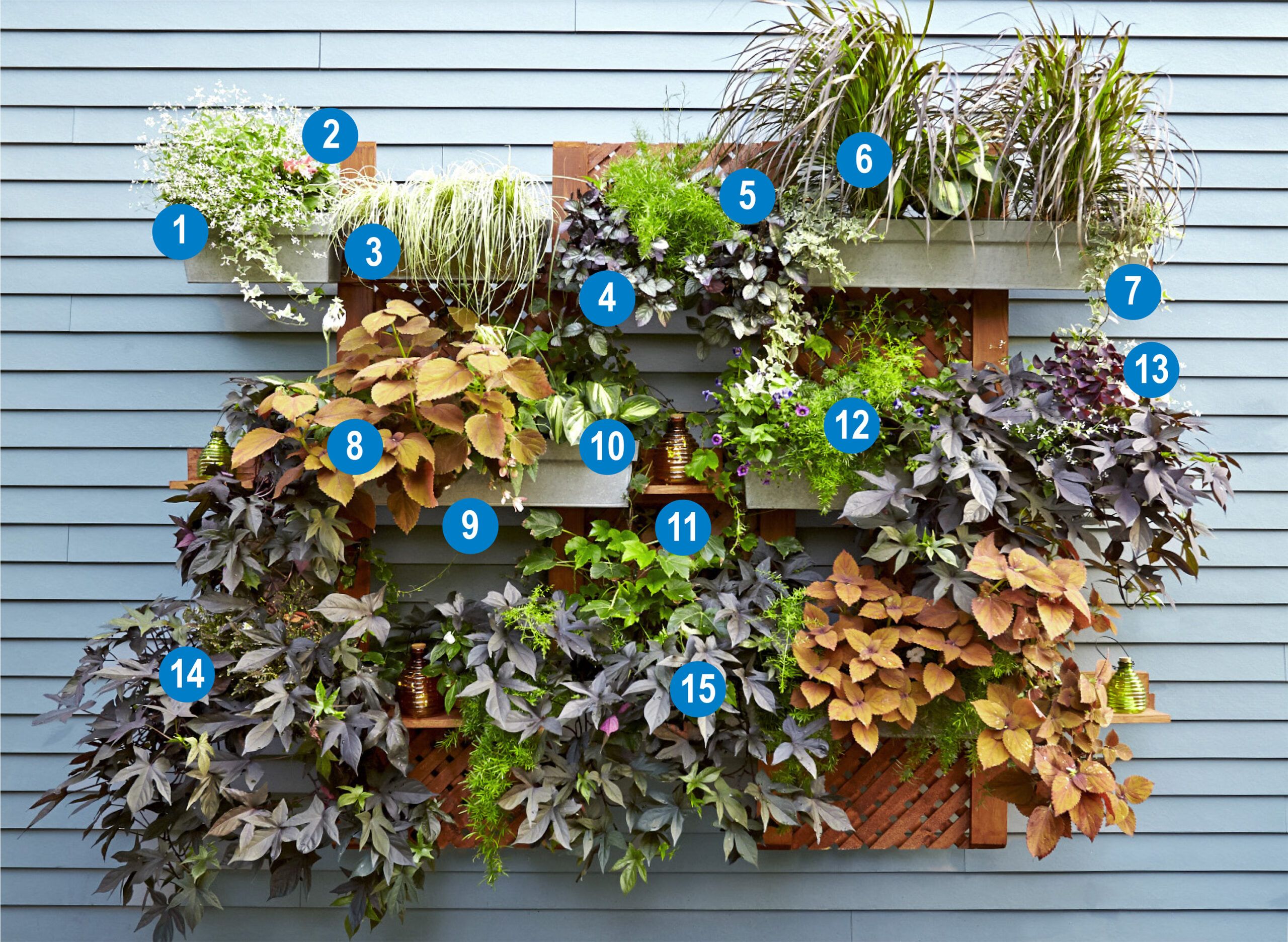
While no plant is perfect for every home and every climate, these low-maintenance plants provide a variety of texture, shape, and color year after year.
- Euphorbia ‘Diamond Frost’
- New Zealand impatiens (pink)
- Striped weeping sedge ‘Evergold’ (Carex oshimensis ‘Evergold’)
- Red flame ivy (Hemigraphis alternata)
- Asparagus fern ‘Sprengeri’
- Red fountain grass (Pennisetum rubrum)
- Variegated English ivy
- Coleus ‘Sedona’
- Angel wing begonia ‘Angel Falls’
- Hosta ‘Hudson Bay’
- Boston ivy ‘Green Showers’
- Superbells Miss lilac (Calibrachoa hyb.)
- Purple shamrock
- Coleus ‘Cranberry Bog’
- Sweet potato vine ‘Blackie’ (Ipomoea batatas ‘Blackie’)
Maintaining Your Living Vertical Garden Wall
Successful vertical gardening is not just about construction—maintaining its health and appearance is equally important.
- Watering: Vertical gardens can dry out more quickly than traditional gardens. Water the plants generously, especially in the first few weeks after planting. A drip irrigation system can offer consistent moisture without overwatering.
- Soil moisture: Regularly check the soil moisture levels. Certain plants may need more water than others, so adjust your watering routine accordingly.
- Fertilizing: Use a balanced, slow-release fertilizer according to the specific needs of your plants. Fertilize every few months to ensure continued growth.
- Pruning: Regularly prune your plants to encourage healthy growth and prevent overcrowding.
- Pest control: Keep an eye out for pests that may affect your plants. Use natural or synthetic repellents as needed to protect your garden.
- Winter care: Depending on your climate, some plants may need additional protection during the winter months. Consider bringing movable planters indoors or using frost covers for sensitivity.
Enhancing Your Vertical Garden
Once your initial vertical garden is thriving, you might want to expand or add more variety to your setup. In addition to plants, you can incorporate a variety of elements to enhance the functionality and aesthetic of your vertical garden.
- Lighting: Solar-powered lights or low-voltage LED lights can be used to create ambient effects while showcasing your garden’s beauty at night.
- Decorations: Add elements such as garden art, birdhouses, or wind chimes to personalize your garden.
- Seating: A small bench or a few garden chairs can transform your space into a relaxing retreat where you can enjoy the fruits of your labor.
- Seasonal plants: Rotate plants throughout the year to keep the garden looking fresh and use plants that will thrive in the current season.
- Edible plants: Consider integrating fruits, herbs, and vegetables like basil, thyme, strawberries, or cherry tomatoes into your garden.
Tools
 Stud finder
Stud finder Tape measure
Tape measure 4-foot level
4-foot level Clamps
Clamps Combination square
Combination square Circular saw with rip fence
Circular saw with rip fence Drill/driver
Drill/driver 1/4-inch long drill bit
1/4-inch long drill bit Miter saw
Miter saw









